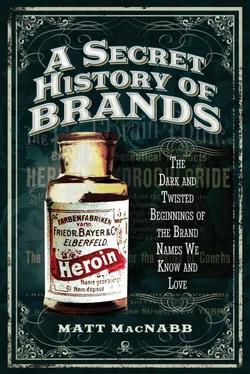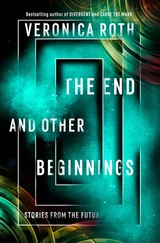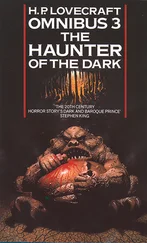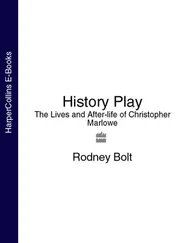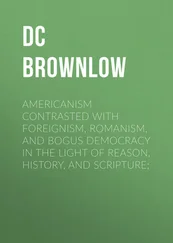I could have accumulated a fortune, but what is money for except to make the whole world better, to help people have a better life?
— John Harvey Kellogg
William Keith became increasingly frustrated watching others outside of The San find success with their health products, while he and his brother had a winning idea waiting in the wings. Battle Creek quickly became the breakfast cereal capital of the world. People came from all around to copy The San’s methods. In fact, over one hundred new cereal companies had opened in Battle Creek by the year 1912. The competition would come and go over the years, as many of the companies were unsuccessful and their product was often of poor quality compared to the big names like Kellogg and Post.
William Keith reached a point where he was fed up with his brother and was finally going to strike out on his own, but the tragic events of 1902 put his plans on hold. The main building of The San burned to the ground. William couldn’t leave his brother in his time of need and Dr Kellogg quickly made plans to rebuild his beloved Battle Creek Sanitarium, bigger and better than before. William Keith stayed on during the reconstruction to be of assistance. He remained at The San for a while, but eventually put his plans into motion and went into business for himself, leaving John Harvey to his obsessions.
In 1906, William Keith made his move and finally added sugar to the breakfast flakes to help improve the taste and appeal of the product. This move was seen as a terrible sin in the eyes of John Harvey. It was the same year that William Keith founded the Battle Creek Toasted Corn Flake Company , while John Harvey continued to sell the cereal strictly through the Sanitarium. John Harvey was very upset about what he saw as the commercialisation of their good family name and a product that had been intended only as a vital part of his life’s work. William Keith was quickly becoming the head of a million dollar a year business and John Harvey’s mood towards his little brother continued to darken over the next few years, as their relationship grew sour.
In 1910 John Harvey decided to change the name of his own company at The San to the Kellogg Food Company . William Keith saw this as a move of aggression and fired back by re-naming his company the Kellogg Toasted Corn Flake Company . William began to include his signature on every box of cereal, along with the slogan ‘Beware of imitations, none genuine without this signature.’
The familial disagreement officially went to court in 1910 when William Keith sued John Harvey; John Harvey fought back by suing William Keith over the use of the family name. Dr Kellogg felt that he himself had made the Kellogg’s brand name a household icon with a fine reputation, which only he could be entrusted with. The Michigan Supreme Court finally granted William Keith Kellogg the right to use his own name in his business ventures in 1920. William was a progressive businessman who ran his cereal plant on four six-hour shifts, which provided more jobs for the local economy in Detroit.
William Keith also took a page out of Post’s book and would eventually start getting serious about developing more innovative ways to promote his product. Advertisements for Kellogg’s would become a prevalent part of magazines, newspapers and billboards throughout the next few decades. There were a variety of marketing campaigns, such as the one for Kellogg’s Bran advertisement that touted that it ‘Will sweep Constipation out of your system Permanently’. Yet another example was a giant 50ft billboard in New York City’s Times Square that read simply: ‘I want Kellogg’s’.
One of the more genius marketing campaigns that Kellogg’s Cereal would offer was the ‘Give your grocer a wink and see what you get’ promotion. The adverts would advise shoppers to wink at their grocer and they would subsequently be given a free sample of Kellogg’s Corn Flakes! The promotion went to great lengths to boost the visibility and popularity of the brand at the time.
Later in Life
The controversial doctor would continue his curious proclivities later in life. In 1906, long before the trend became infamous in Hitler’s Nazi Germany, John Harvey Kellogg was an ardent eugenicist. The complicated, but disturbing, trend of eugenics in the early twentieth century often involved blatant bigotry and racism. John Harvey co-established and helped to fund the ‘Race Betterment Foundation’ in Battle Creek. The foundation of the racist group was to promote a purity of breeding. In fact, Kellogg himself purported that they should create a registry that would identify appropriate breeding pairs, exercising control over the white race and keeping it pure. He firmly believed in racial segregation. They also believed that anyone that wasn’t of ‘good stock’ shouldn’t breed, from the mentally ill to criminals. There were many famous eugenicists in the era, including President Theodore Roosevelt, Winston Churchill and (quite ironically) Helen Keller.
Dr Kellogg’s beloved San would fall into difficult times during The Great Depression. The well-to-do business saw a drop in turnover by a devastating seventy-five per cent. In 1930 Dr Kellogg broke with the church and left The San. The Sanitarium was over three million dollars in debt by the middle of the 1930s and in 1933, it fell into receivership. Kellogg left Michigan and established a new life in Florida with an interest in opening another Sanitarium there. William Keith made his brother the generous offer of 1.5 million dollars (around 21 million dollars today) to purchase the Battle Creek Food Company. John Harvey was insulted by the offer, feeling that it was far too low. Dr Kellogg continued working in medicine, as a pioneer in recognising the risks of high blood pressure and heart disease. It was during his time in Florida that his relevance began to fade, as medicine continued to grow and progress beyond his out-dated ideals.
The Death of Dr Kellogg
In October of 1942 William Keith Kellogg made a tepid journey down to the state of Florida, where his brother John was residing, to discuss some business concerns. William Keith arrived expecting their usual confrontational relationship, only to find that John Harvey had been rapidly losing touch with reality. William Keith found his brother rambling and confused, a shell of the once sharp and decisive man. The divide that was caused by the Kellogg brothers’ cereal wars had taken a deep toll on their relationship and now that John Harvey had all but lost his senses, any hope of reconciliation was out the window. It is said that John Harvey wrote a seven-page letter of apology to William Keith on his deathbed, but his brother never received it. The Kellogg brothers would never speak to each other again. John Harvey Kellogg passed away on 14 December 1943, at the ripe old age of 91. William Keith Kellogg lived until 6 October 1951, also dying at the age of 91.
Kellogg’s Cereal Today
The Kellogg brothers continued to be a stark contrast. William Keith Kellogg was not an ardent eugenicist and, by contrast, he established the W.K. Kellogg Foundation in 1930. According to the official W.K.K.F. website their mission is:
The W.K. Kellogg Foundation was established in 1930 by breakfast cereal pioneer W.K. Kellogg, who defined its purpose as ‘…administering funds for the promotion of the welfare, comfort, health, education, feeding, clothing, sheltering and safeguarding of children and youth, directly or indirectly, without regard to sex, race, creed or nationality….’ To guide current and future trustees and staff, he said, ‘Use the money as you please so long as it promotes the health, happiness and well-being of children.’
Читать дальше
